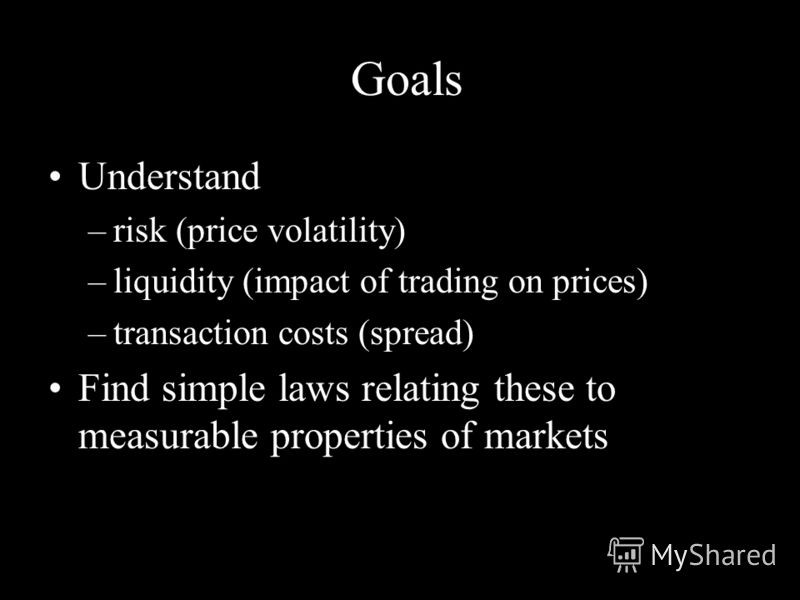Introduction to Understanding Volatility Traders Laboratory
Post on: 16 Март, 2015 No Comment

Volatility is key concept in trading just like trend, momentum, mean reversion and relative strength. However, it is a generic term used in several different contexts which can be confusing. I have not seen a comprehensive yet simple overview on volatility so will take a shot at this one.
Why it is very important to understand volatility?
- Volatility itself is a primary measure of risk.
- Price volatility presents opportunities to buy assets cheaply and sell when overpriced.
- The wider the swings in instrument’s price the harder emotionally it is to not worry.
- For trading instruments which have an expiry date (derivatives), it is not just important at which price you buy, but also the time at which you buy. For proper timing and understanding of volatility cycles is essential.
- Market moves in a cyclical fashion from phase of low volatility to high volatility and so on. These phases result in most technical chart patterns such as trading range compression, buying climax etc.
- When certain cash flows from selling a security are needed at a specific future date, higher volatility means a greater chance of a shortfall.
- Higher volatility of returns while saving for retirement results in a wider distribution of possible final portfolio values.
- Higher volatility of return when retired gives withdrawals a larger permanent impact on the portfolio’s value.
Volatility Metrics
How a trader will define volatility depends upon the instruments he is trading and the timeframe being used for trading. A stocks trader will have a different perception about the volatility than an options trader. Volatility for an Investor has different meaning than (say) volatility for a short-term Trader. And again, volatility in a portfolio will be measured differently than volatility in stocks.
There is significant overlap in these definitions (metrics) while categorizing by the types of traders. This article should supposedly help beginner traders in choosing the metrics most relevant to them.
For Outright Traders
Trading outright means taking a long or short position. The other important trading type is hedging.
Standard Deviation: The s.d. of price returns over a certain period remains the most popular measure of volatility. Most technical indicators used for trading breakouts (like Bollinger Bands) use the same.
Average True Range: ATR is usually calculated over daily ranges. This is very useful for daytraders and short-term traders. Traders use ATR to determine how far they need to place stop loss.
Bands: The width of price bands like Bollinger Bands, Donchian Channels, Keltner Channels, regression channels etc. serve as a good indication of underlying volatility.
For Option Traders
Actual Future volatility: It refers to the volatility of a financial instrument over a specified period starting at the current time and ending at a future date (normally the expiry date of an option)
Implied Volatility: it is the volatility that, when used in a particular pricing model, yields a theoretical value for the option equal to the current market price of that option. It is a forward looking measure.
Historical Implied volatility: it refers to the implied volatility observed from historical prices of the financial instrument (normally options)
Current implied volatility: it refers to the implied volatility observed from current prices of the financial instrument
Future implied volatility: it refers to the implied volatility observed from future prices of the financial instrument
For Investors
Historical Volatility: or actual historical volatility refers to the volatility of a financial instrument over a specified period but with the last observation on a date in the past.
VIX: It is a weighted blend of prices for a range of options on the S&P 500 index. The current market prices of all out-of-the-money calls and puts for the front month and second month expirations are used in calculation. This is the most favored one, the other important tickers measuring volatility are: VXO, VXN, RVX, VXD and VXX (etf).
For Portfolios and managed funds (Hedge Funds)
Beta: The beta is an important measure of risk. It is calculated by comparing the changes in returns of the portfolio with a benchmark.
R-Squared: It is the correlation of a portfolio’s movements to that of its benchmark. It measures the degree to which a portfolio’s volatility is a result of the day-to-day fluctuations experienced by the overall market.
For Trading Regime Analysis
Noise: there are several statistical as well as simple technical methods to measure the amount of noise in a trading instrument over a period.
Internal Movements: the strength of external movements to internal movements over a period of time is an important measure for placing stoplosses as well as targets.
Price Shocks:some stocks are inherently more vulnerable to price shocks. For example, FSLR vs KO.
Trading Ranges: The frequency at which prices remain in a trading range versus the time they spend trending.
Stationarity: the level of stationarity in a time series serves several purposes such a detrending and trading pair identification
For Fundamental Analysis
Market Capitalization: Small caps tend to be more volatile than large caps.
Share Holding Pattern: Amount of shares privately hold versus publicly hold is a good measure of stability.
Leverage: the operating leverage which a company is employing also affects its volatility.
Industry Groups: Business in certain industries is inherently more volatile than the others. For example, stocks of retailers are less volatile than those of internet companies.
thanks,
- Share
- Share this post on Digg Del.icio.us Technorati Twitter














